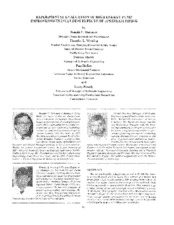| dc.description.abstract | The suction-impeller (single-suction) of a 33,500hp, four-stage barrel pump used in boiler feed service at a fossil fuel steam plant experienced operating life ranging from 6.0 to 19 months. Cavitation erosion on the suction surface and in the hub fillet area caused this unacceptably short life. This pump design is unique in that its suction-stage operates at an inlet tip velocity of 281 ft/sec. This tip speed, coupled with a stage pressure rise of about 1160 psi places this machine well into the category of “high energy” pumps, and signals the need for special design attention to elements of its hydraulic design in order to provide suitable performance, reliability and operability. In a joint program with the user and the pump manufacturer, the problem was investigated, a test program conducted, redesign of the impeller completed and replacement impellers commissioned in the field. Elements of the investigation and test program included the impeller design itself, suction bay distortions and effects of distorted flow generated by the upstream piping. The redesign was accomplished through the use of sophisticated computational techniques and experimental flow visualization. The final design, referred to as a biased-wedge, was manufactured using a precision, lost wax casting process, with a special stereolithographic technique used to translate the final blade design into usable patterns. One of the final set of impellers was tested using flow visualization. The test program confirmed that the final design was free of cavitation bubbles at the baseload condition and significantly reduced vapor activity and hence damage potential at min-flow. The effects of flow distortions (on cavitation activity) presented to the impeller by the suction bay (so prevalent with the conventional design) was effectively countered by the biased-wedge design. Finally, the flow distortions (both introduction of swirl and uneven mass distribution) at the pump suction flange were modeled and tested with both conventional and biased-wedge impellers. In both cases, these distortions had no effect on the formation or collapse of cavitation vapor in the impeller eye. These conclusions are valid for only this single-suction type of configuration. The impellers have been commissioned in the field units and are currently accumulating operational hours. | en |


